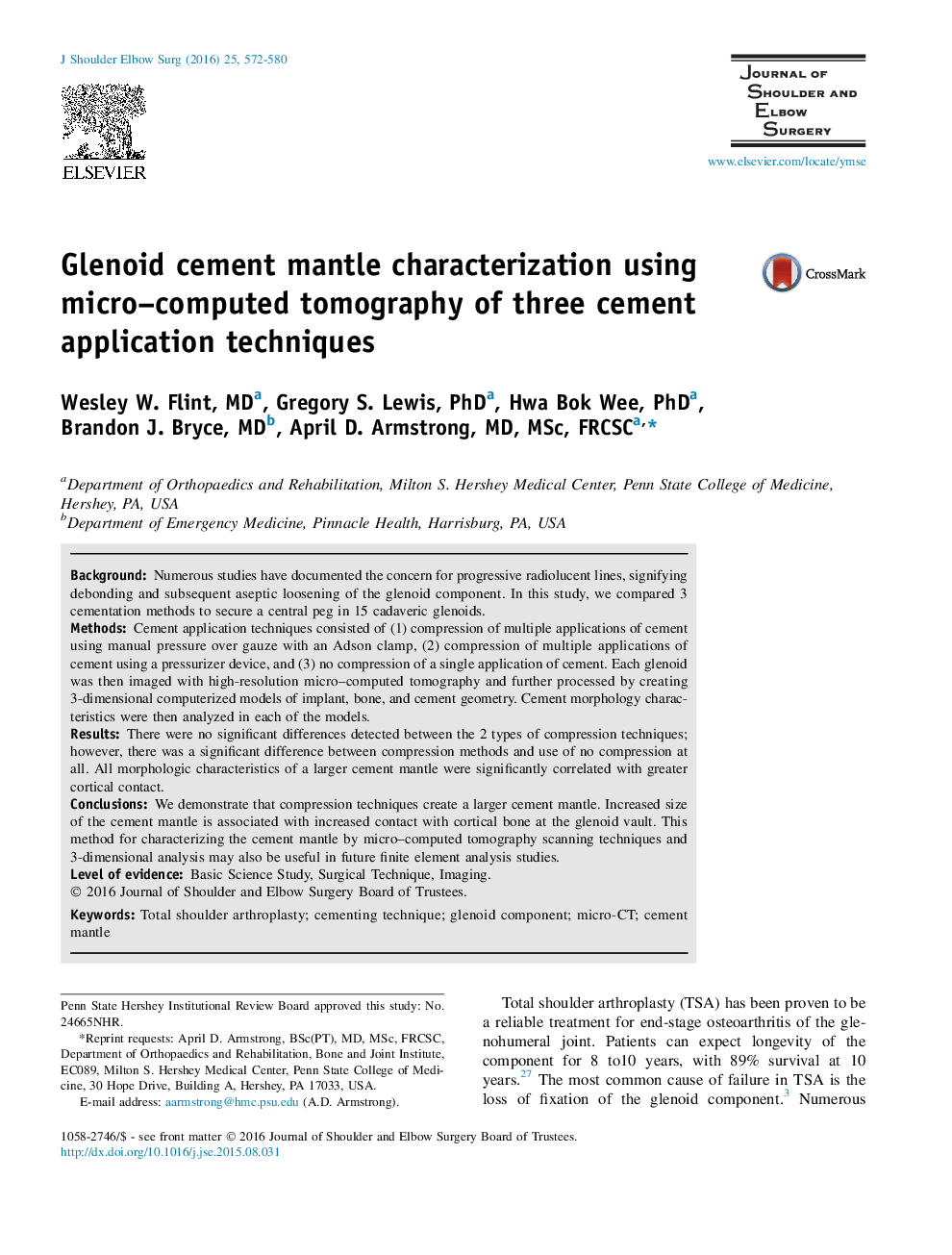| Article ID | Journal | Published Year | Pages | File Type |
|---|---|---|---|---|
| 4073125 | Journal of Shoulder and Elbow Surgery | 2016 | 9 Pages |
BackgroundNumerous studies have documented the concern for progressive radiolucent lines, signifying debonding and subsequent aseptic loosening of the glenoid component. In this study, we compared 3 cementation methods to secure a central peg in 15 cadaveric glenoids.MethodsCement application techniques consisted of (1) compression of multiple applications of cement using manual pressure over gauze with an Adson clamp, (2) compression of multiple applications of cement using a pressurizer device, and (3) no compression of a single application of cement. Each glenoid was then imaged with high-resolution micro–computed tomography and further processed by creating 3-dimensional computerized models of implant, bone, and cement geometry. Cement morphology characteristics were then analyzed in each of the models.ResultsThere were no significant differences detected between the 2 types of compression techniques; however, there was a significant difference between compression methods and use of no compression at all. All morphologic characteristics of a larger cement mantle were significantly correlated with greater cortical contact.ConclusionsWe demonstrate that compression techniques create a larger cement mantle. Increased size of the cement mantle is associated with increased contact with cortical bone at the glenoid vault. This method for characterizing the cement mantle by micro–computed tomography scanning techniques and 3-dimensional analysis may also be useful in future finite element analysis studies.
